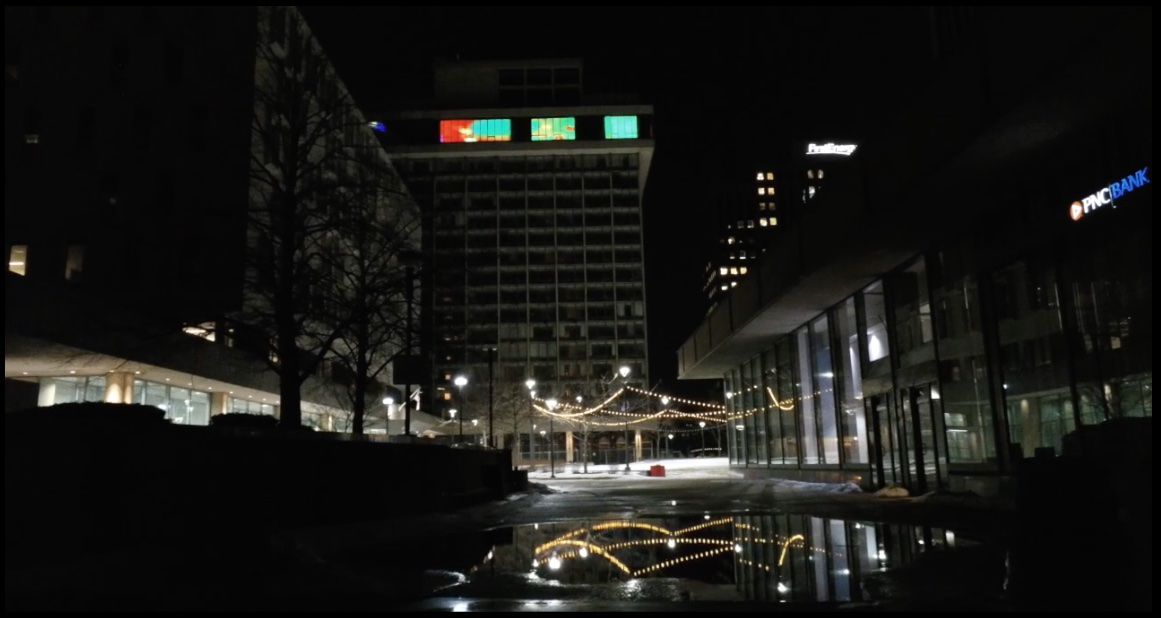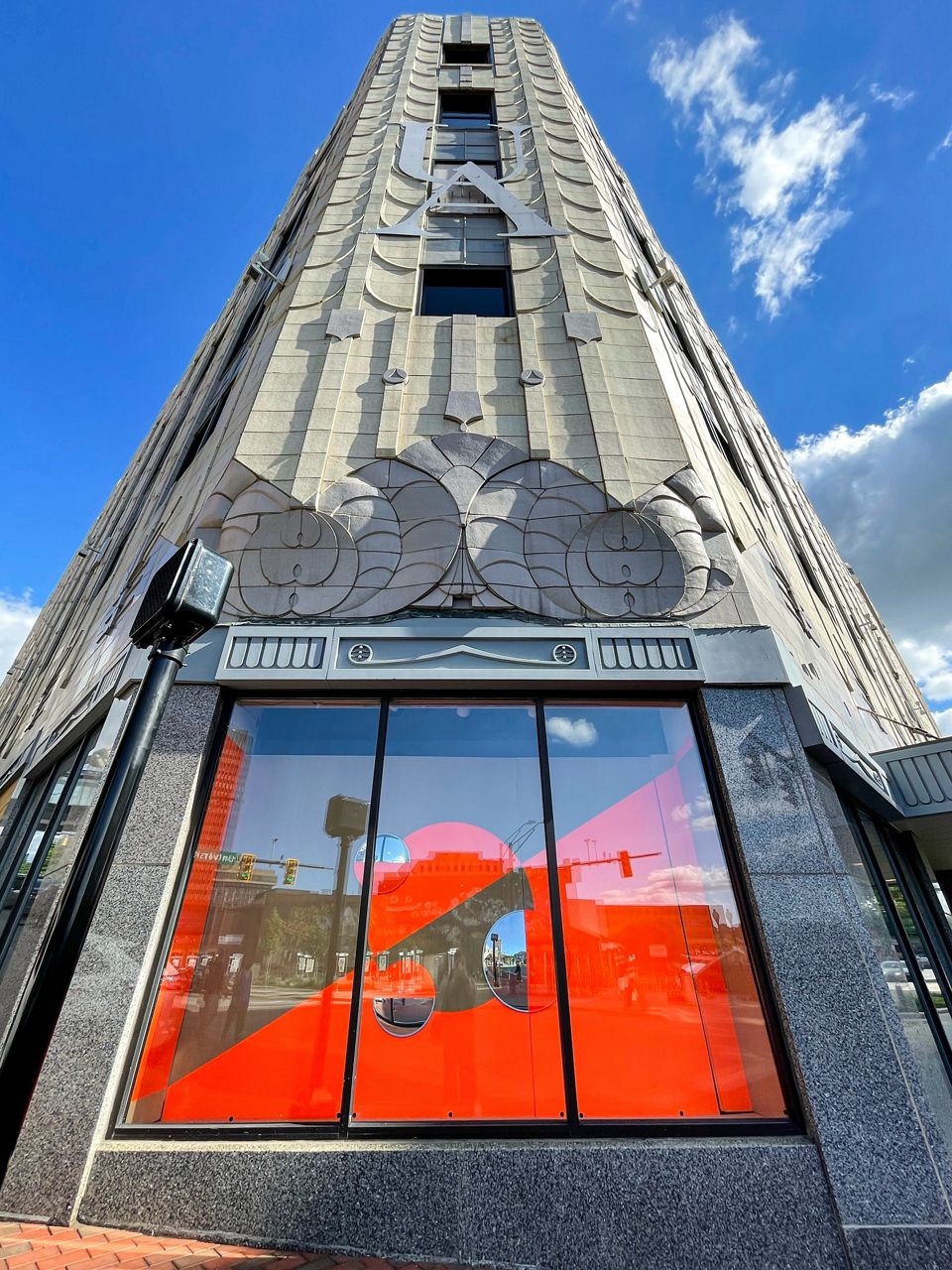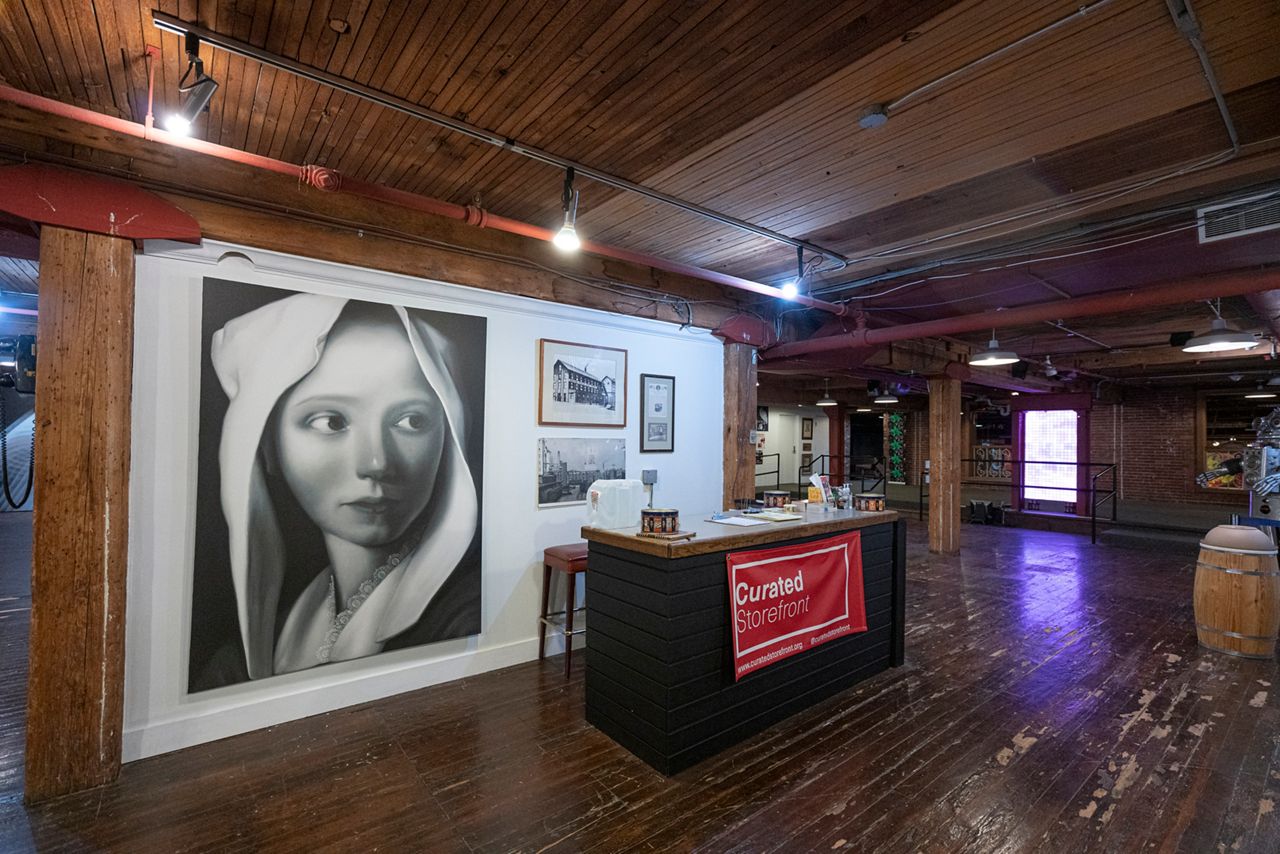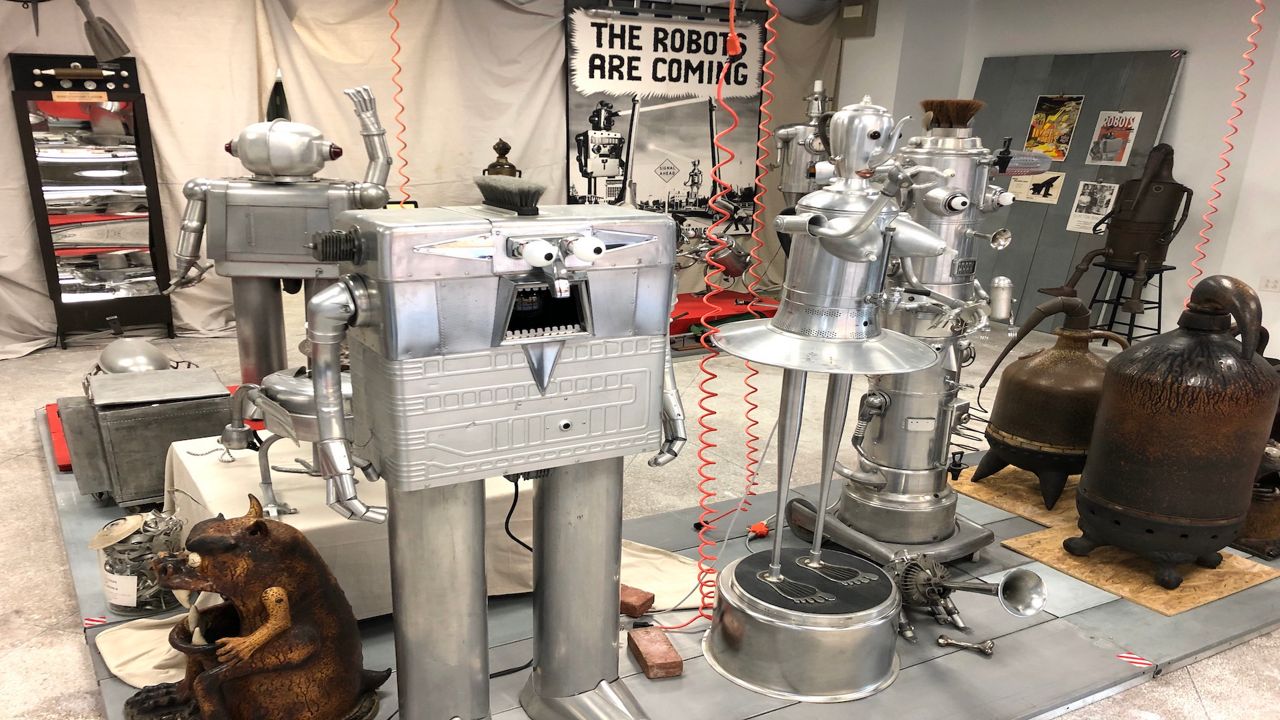AKRON, Ohio — Over the past six years, downtown Akron spaces have sprung to life with artistic displays of color, texture, mirrors and lights in a project working to bring vibrancy back to the city’s vacant and underused buildings.
More than 30 Akron spaces have showcased the work of more than 200 regional and international artists, all selected and supported by Curated Storefront, a nonprofit that launched as a popup through a 2016 Knight Arts Challenge grant.
Knight Arts Challenge grants are awarded for the best ideas for engaging and enriching the community through the arts.
Curated Storefront went a few steps further, proposing art as a way to make downtown more appealing for residents and as an economic driver for downtown revitalization, while offering artists gainful employment.
So far, it’s working.
Since Curated Storefront launched, nearly half the buildings in which art was displayed have been sold or leased, while thousands of people have viewed the work of paid artists, said Executive Director Rick Rogers.
Curated Storefront is looking at ways art can be an “economic engine,” for the city and region, Rogers said.
“Akron’s kind of a postindustrial city, and I think it's struggling to find its way, find a new way,” he said. “I think art can be a major stimulus to making something like a renaissance happen in a Midwestern city, in a previously industrial city.”
Rogers, who is not an artist, describes himself as a “a recovering executive.”
In his former life, he owned a software company in downtown Akron for many years. Now, Rogers works to bring artistic energy to darkened spaces and storefronts alongside a small team but dedicated — Creative Director Courtney Cable and Curator Annie Wischmeyer.
From day one, Curated Storefront’s installations have run the gamut of artistic styles.
One of the earliest installations made use of the objects found in the space the installation occupied, Cable said.
A current display features 20,000 LED lights wrapped around the top of the Cascade Plaza Hotel on Main Street, creating a morphing, abstract painting of lights that’s visible a mile away, Rogers said.

As with the start of many creative undertakings, the idea for the project was solid, but how it would manifest wasn’t initially clear.
“I think Courtney and I, we were kind of scratching around in some empty spaces,” he said.
The first project was at the high-traffic intersection of East Market and High streets in a space that had been empty for eight years, he said.
A couple different installations were rotated through the space, Cable said, before a repurposed neon display went in.
“It was right in the window, right in your face, all brightly lit, beautiful colors,” Cable said. “You couldn't miss it.”
Now the site houses the popular Akronym Brewing Taproom & Public House.
Next the group worked one block west, at another high-traffic intersection at Market and Main streets, in the United 1 Building, Rogers said. That building is now occupied by BLU-Tique Hotel Akron.
The installations can remain in place from six months to a couple years, while artists can come from almost anywhere, Rogers said. Some reach out to Curated Storefront, while others are found during visits to universities and art shows.
Cable’s job is to serve as the liaison between installation teams and building owners, assisting at every stage, from contracts to installation, finessing all the parts so the projects are as seamless as possible.
“I'm catching the energy and transforming it and making it happen,” she said.

Over time, Curated Storefront has broadened its reach to activate larger spaces while continuing to work with storefronts, all to the same end — bringing back vibrancy to the spaces.
Currently, Curated Storefront has dedicated two floors in the University of Akron’s Polsky Building, including 40-linear feet of sidewalk at the ground floor, to a pop-up museum titled “World of Wonders: Mechanical Molecules,” featuring the work of the late California-artist Clayton Bailey, Rogers said.
On a recent trip to California, Rogers visited a museum dedicated to Bailey’s work. The steady stream of people coming to see the art motivated him to acquire about 200 pieces from the artist’s estate, he said.
“He's got a pretty killer sense of humor, I'll say, in his art, and the way he implements his art,” Rogers said. “He works with disused objects, but he was primarily a ceramic artist and dabbling in a number of different styles. During his career, he was incredibly productive.”
The Bailey museum has proven popular in Akron, prompting Curated Storefront to conduct tours through the exhibit for a variety of groups.
Curated Storefront also has a role in the transformation of Akron’s Lock 3 Park, Rogers said. The agency is curating pieces of art for the large urban park, which is undergoing a $10 million renovation led by the Ohio & Erie Canalway Coalition. The project will bring landscaping, seating and amenities for families to what is essentially a large open field.
The agency also recently brought Quaker Galleries to a vacant section of the historic Quaker Square, a former Quaker Oats factory the University of Akron now leases for large events.
The success of the galleries in drawing people to the Quaker Square drew kudos from University President Gary Miller.
“What you all are doing is working,” Miller told Curated Storefront. “Your presence has helped to maximize interest in the building, and we are confident it will ensure long-term viability of the space. Before your presence we didn't have much interest.”
Curated Storefront has not abandoned downtown and will soon be activating three new buildings occupied above the ground floor but in need of creative energy at the street level.
Artists will soon be named for projects to activate the Huntington Tower, Chemstress Consultant Co. and the Welty Building Co.’s Landmark Building in the Bowery District, Rogers said.
For more information about Curated Storefront, visit the website.




